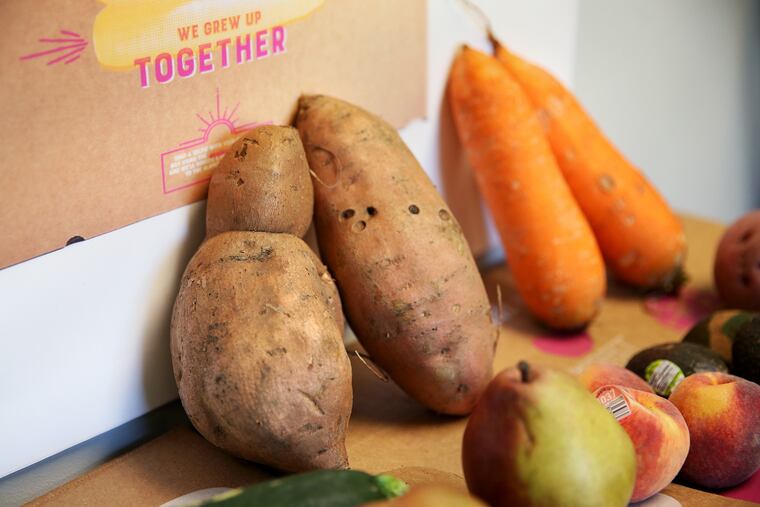How to find fresh food and make healthy meals while grocery shelves are bare
As the coronavirus surges and winter storms snarl traffic, shoppers are looking desperately for pet food, baby formula and dietary staples that are usually easy to access.

Kit Kat and Niblet were down to one can of wet cat food, so Stephanie Owens ventured out Monday to buy their favorite brand.
She checked the shelves at her local Stop & Shop in Middletown, N.J.: empty.
She tried the new Shop Rite, where gleaming shelves held the appearance of abundance: bare.
Frustrated, Owens scoured online retailers. A dozen cans of Fancy Feast were selling for about $40, three times their usual cost.
Owens said she was still searching for cat food Wednesday, joining countless others who have struggled to find necessities since a confluence of factors wiped out grocery-store supplies in many parts of the country. As the coronavirus surges and winter storms snarl traffic, shoppers are looking desperately for pet food, baby formula, and dietary staples that are usually easy to access.
“What are we going to do if months go by?” Owens asked. “What’s going to happen down the road if this problem isn’t corrected — whatever the problem is?”
Regardless of how long the shortages last, there are some creative ways to get important items and make do with what you have.
Try creative sources
Major grocery chains appear to be the most affected by the current shortages, but there’s no reason your food shopping has to end there. Independently owned stores, grocers centered on foods of a certain ethnicity, and specialty shops, such as butchers, may have more stock because of greater flexibility to work with different producers.
Direct-to-consumer grocery or meal-delivery services — such as Imperfect Foods, Misfits Market, or Weee — may also have a greater supply. Customers can usually sign up to receive the boxes as frequently as they want, said Jessica Titchenal, a certified nutritionist. Some companies offer recipes with the grocery items. And customers generally can pause or cancel their subscriptions whenever they want.
Leaning on those options, Titchenal said, can make empty grocery stores less disruptive to people already exhausted from nearly two years of pandemic living.
“We’ve all been getting very creative, but I think a lot of people are so tired already,” she said. “They’re so burned out. And to try to figure out, ‘What do I eat now?’”
» READ MORE: Philadelphia artisans have great alternatives to the cream cheese shortage
Lean on your community
If you’re looking for something in particular, your neighbors may have it or know where to find it. Facebook Marketplace, Nextdoor, local listservs, or Facebook groups, such as neighborhood groups or Buy Nothing groups, might provide options. If all else fails, many local food banks stock specific items, such as baby formula or pet food.
But when it comes to finding food or medicine for their animals, a veterinarian should be a pet owner’s first phone call, said Becky Robinson, president of Bethesda, Md.-based animal welfare group Alley Cat Allies. Vets sometimes have food in stock at their offices, and owners can check with other veterinarians if their first inquiry is fruitless.
“Many vets are great at finding comparable medication or prescription food to use, making do with what they can get their hands on and finding what will work,” Robinson said.
Make the best of what’s available
Sometimes when you can’t find something, you have to revise your plans. But if you’re familiar with common substitutes for fresh foods, that change doesn’t have to be intimidating, said Isabel Maples, a spokeswoman for the Academy of Nutrition and Dietetics.
Maybe your store doesn’t have the cut of beef that you want, so you substitute a type of pork with a similar cooking time. Or maybe the store doesn’t have red meat or poultry at all, Maples said, so you turn to frozen or canned fish or plant-based options. Mushrooms, beans, quinoa, and brown rice are protein sources that might be more widely available.
For fruits and vegetables, Maples said frozen, canned, or dried options are packed at peak freshness and provide similar nutrition to their fresh counterparts. She suggested checking that the produce is packed in water, rather than sugary syrup, and choosing a no-salt-added version to keep your sodium intake in check.
And canned, powdered, or ultrahigh-temperature milk — often found in the baking or juice aisles — may be acceptable substitutes for refrigerated milks if they’re incorporated into a recipe, Maples said. They may be unpalatable on their own.
Titchenal said she tries to improve the taste of second-choice ingredients by adding flavor-enhancers such as herbs, butter, lemon juice, or apple cider vinegar. Blending frozen vegetables, which often taste different from fresh vegetables, into a soup can help mask their textures.
Crucially, Titchenal said, consider building your meal plan around a limited number of ingredients.
“Simplify your meals as much as possible so you don’t have to worry about whether one of your 10 ingredients won’t be available and you don’t have to think of as many alternatives,” she said.
As for pets, they can eat some human foods mixed with kibble or served alone, said Lori Bierbrier, director of community medicine at the American Society for the Prevention of Cruelty to Animals.
Dogs can eat cottage cheese, plain cooked grains or oatmeal, canned vegetables with the extra salt rinsed off, and peanut butter (except peanut butter sweetened with xylitol). Cats, Bierbrier said, can eat canned or cooked fish, small amounts of cheese or cooked eggs, ground corn, brown rice, barley, or couscous.
The existence of those alternatives came as a relief to Owens, who has been feeding her felines only dry food as shortages in her area continue.
“They’ve eaten the last can of the wet,” she said. “I have a couple friends keeping an eye out for me.”
The Washington Post’s Lindsey Bever, Becky Krystal, Sarah Parnass, and Kari Sonde contributed to this article.